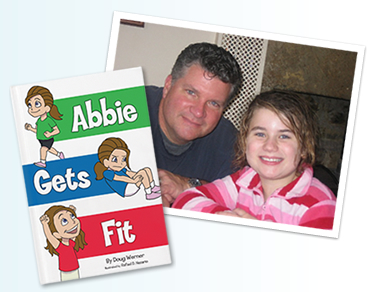Nearly two out of three boys, and one out of two girls, will play an organized sport between the ages of 5 and 18. For those who stick with it well into their teens, most will receive at least a fundamental appreciation for the need to be fit and the know-how to do so.
But, what about all of the others? How and when do they learn fitness basics?
Well, if your child is one of the lucky few in a school system that still offers a comprehensive physical education program, then there is a good chance that they will learn while in school. But the question is, for those children, or even children who are young ‘athletes', do you really want to leave your child's health and fitness to ‘chance' or to others?

According to a recent report by the Institute of Medicine, nearly one-third of all American children under the age of 18 are overweight or obese, and that number has grown by 10% every decade for the last 30 years. Not surprisingly, the two most common direct causes are routinely acknowledged to be consuming too many calories and too little physical activity. The nutrition challenge is not just due to the increased popularity of fast food restaurants, but also the convenience of processed foods and sugary drinks.
Despite packaging requirements that now clearly detail the nutrition and caloric value of most packaged and fast foods, overweight children still tend to consume calories at a rate far exceeding their daily metabolic requirement. Compounding this problem is a disturbing physical activity trend that continues to be challenged by the popularity of sedentary activities like TV viewing, video game playing and social media interaction.
Unfortunately, most schools are not helping much either, as physical education classes and recess time continue to dwindle. Need more evidence? Visit any playground or ball park after school or on a weekend to witness the lack of children in ‘free play'. And, if obesity sets in at a very young age, the likelihood of playing organized sports later decreases as well.
However, even involvement in an ‘organized sport' is no guarantee that your child will get enough daily exercise. A typical youth sport program includes one or two practices per week plus one or two games each weekend. Most health experts agree, children need a minimum of at least 60 minutes of vigorous exercise per day to be fit and healthy. Even if all of those sports ‘events' are high intensity, which is rarely the case in youth sports, there is a good chance that your young athlete is not getting enough exercise on a weekly basis. Now, just imagine the challenge for all of those ‘non-athletes'!
Teach and model fitness early
So what's a conscientious parent to do to insure their child grows up with a firm respect for the need to be fit and healthy? Well, like most other ‘values' that young children learn, the earlier the better. And, of course, parental role modeling, commitment and involvement are essentials as well. But therein lies a tremendous win-win too! Daily involvement in your child's exercise program not only helps to ensure their fitness, but it will also benefit you as well. In addition to the physical fitness rewards, there are bonding and education benefits as well, especially if you take the time to engage your child in stimulating conversation during your daily ‘workout'. And, the really good news; your workout can be as easy and inexpensive as a daily walk together!
Take a walk!
According to The Mayo Clinic, walking, like other exercise, can help you and your child achieve a number of important health benefits.
Walking can help you:
- Lower low-density lipoprotein (LDL) cholesterol (the "bad" cholesterol)
- Raise high-density lipoprotein (HDL) cholesterol (the "good" cholesterol)
- Lower blood pressure
- Reduce the risk of, or manage, type 2 diabetes
- Manage weight
- Improve mood
- Stay strong and fit
All it takes to reap these benefits is a routine of brisk walking. It doesn't get much simpler than that. And you can forget the "no pain, no gain" talk. Research shows that regular, brisk walking can reduce the risk of heart attack by the same amount as more vigorous exercise, such as jogging."
Of walking, Dr. Catrine Tudor-Locke of the American Academy of Sports Medicine says, "There are certainly many forms of cardiovascular exercise that improve health and fitness, such as running, cycling, and swimming. But, from the perspective of finding a great exercise program for the most number of people, walking is the best bang for your buck."
If in doubt about what to do, or where to start for your child's daily exercise, get off on the right foot and take a walk!
 Doug Werner is the author of Abbie Gets Fit, a children's book chronicling a true story about his nine year old daughter's fitness transformation after she asked her dad to help her get in shape to pass her school's fitness test (to which he responded, "Let's go take a walk!"). Doug is a 35-year veteran of the fitness industry and a recipient of that industry's Distinguished Service Award. He is currently a vice president of Healthtrax Fitness and Wellness in Glastonbury, Connecticut. Doug can be reached at doug@abbiegetsfit.com, or by visiting his website.
Doug Werner is the author of Abbie Gets Fit, a children's book chronicling a true story about his nine year old daughter's fitness transformation after she asked her dad to help her get in shape to pass her school's fitness test (to which he responded, "Let's go take a walk!"). Doug is a 35-year veteran of the fitness industry and a recipient of that industry's Distinguished Service Award. He is currently a vice president of Healthtrax Fitness and Wellness in Glastonbury, Connecticut. Doug can be reached at doug@abbiegetsfit.com, or by visiting his website.








